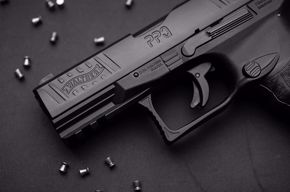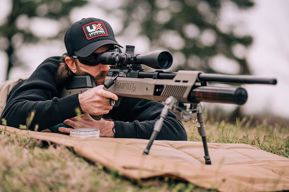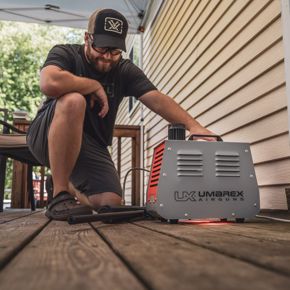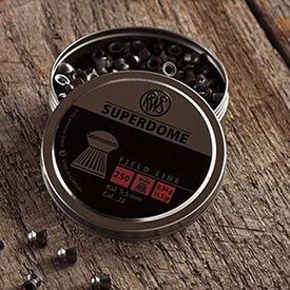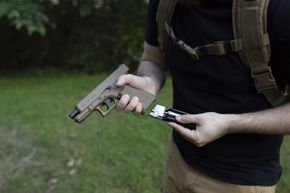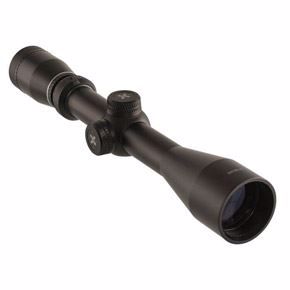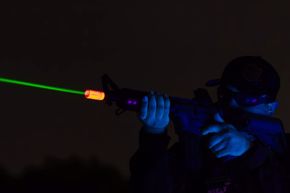In the world of airgunning, traditional spring and gas piston-powered pellet rifles stand as reliable, time-tested tools for target shooting, pest control, and small game hunting. These non-PCP air rifles operate without external air tanks or CO₂ cartridges, making them self-contained, consistent, and favored by shooters who value simplicity and durability. In this third installment of the Airgun 411 series, we’ll explore traditional pellet rifles — including how they work, the different action types available, their most common uses, and the standard calibers they come in. All examples in this guide are available from Umarex USA.
What Are Traditional Pellet Guns?
Traditional pellet guns are air rifles that use either a spring-piston or gas piston (gas ram) powerplant to launch a pellet through compressed air. Unlike pre-charged pneumatic (PCP) or CO₂-powered airguns, these rifles compress air manually via a mechanical cocking action — typically through a break barrel, underlever, or side lever system. This self-sufficient design offers shooters the freedom to shoot without worrying about air tanks, pumps, or gas cartridges.
Types of Actions in Traditional Pellet Rifles
One of the key distinguishing features of these airguns is how they are cocked. Here are the three primary action types:
1. Break Barrel
The most common type of traditional air rifle, break barrel guns are cocked by bending the barrel downward, which compresses the spring or gas piston and loads the pellet. These rifles are simple, intuitive, and widely used.
-
Example: The Ruger® Air Hawk is a classic break barrel, spring-powered air rifle that delivers excellent accuracy and power in .177 caliber.
2. Underlever
In an underlever air rifle, the cocking lever is located beneath the barrel and swings downward to cock the gun. This design allows for a fixed barrel, which often improves accuracy.
-
Example: The Synergis Elite .177 Caliber Underlever Air Rifle features a rotary magazine, gas piston powerplant, and fixed barrel — making it a great choice for precise, multi-shot shooting.
3. Side Lever
Side lever rifles use a lever on the side of the receiver to cock the gun. Like underlevers, they retain a fixed barrel, which enhances consistency and accuracy.
-
Example: The (discontinued) Walther LGU Varmint is an example of a premium, side-lever design preferred by enthusiasts for its smooth operation and stable performance.
Powerplants: Spring vs. Gas Piston
Traditional pellet rifles come with either:
-
Spring-Piston: These use a coiled steel spring compressed during cocking and released upon firing to propel the pellet. They’re tried-and-true but may produce more vibration and require more maintenance over time.
-
Gas Piston (Gas Ram/Nitro Piston): These replace the spring with a sealed gas cylinder, offering smoother shooting, faster lock time, and better cold-weather performance.
-
Example: The Prymex .22 Caliber (Turbo Nitrogen Technology) gas piston for smoother operation and improved longevity compared to traditional springers.
Most Common Uses for Traditional Pellet Guns
Traditional pellet rifles are popular for a variety of shooting disciplines due to their balance of power, accuracy, and independence from external power sources.
1. Target Shooting and Plinking
Great for backyard marksmanship, many pellet rifles — such as the Air Hawk and Prymex — offer excellent accuracy and ease of use for both beginners and experienced shooters.
2. Pest Control
The .22 caliber models deliver sufficient power for dispatching common backyard pests like rats and starlings, especially at close ranges.
3. Small Game Hunting
Hunting small game like squirrels and rabbits is a common application, especially with rifles pushing 12+ foot-pounds of energy (FPE).
Popular Pellet Gun Calibers
Traditional air rifles are most often chambered in the following calibers:
-
.177 Caliber: The most common and widely available. Ideal for target shooting and light pest control due to its flatter trajectory and higher velocity.
-
.22 Caliber: Offers more impact energy, making it better suited for hunting and pest control. It trades velocity for stopping power.
-
Example: The Ruger Targis Hunter Max is a .22 caliber air rifle that combines a gas piston with a powerful .22 platform for serious performance.
The 411 on Traditional Pellet Guns
Traditional pellet guns — whether break barrel, underlever, or side lever — remain a cornerstone of the airgun world for good reason. They provide reliable, powerful performance with minimal maintenance and no need for air tanks or CO₂. From backyard plinking to field-ready small game hunting, these rifles offer simplicity without sacrificing capability. Umarex USA continues to lead the way with dependable, feature-rich models in both .177 and .22 calibers.

